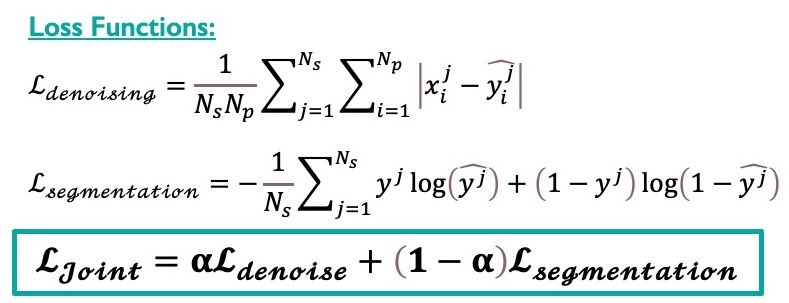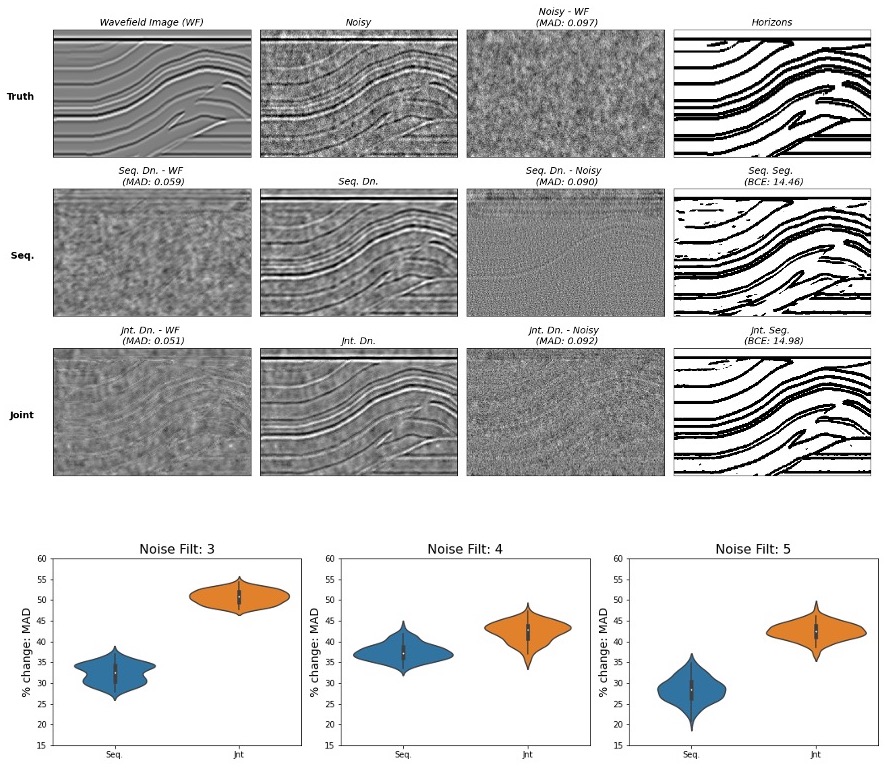Enhancing self-supervised noise suppression through a joint denoising-segmentation scheme (Birnie, C. E., and Alkhalifah, T., 2022)
Typically, the steps in the seismic processing and interpretation workflow are treated in isolation. Previous work based on statistical approaches showed how post-stack inversion could be improved through the inclusion of a horizon detection scheme.
In this work, we extend this school of thought into the field of deep learning for seismic processing and interpretation. We propose the combination of a self-supervised denoising scheme with a horizon segmentation task. The self-supervised denoising procedure requires no noisy-clean data pairs for training, a common drawback of deep learning procedures for seismic applications. However, skeletonised horizon maps are required for the segmentation training. The proposed scheme is validated on a post-stack seismic cube from the SEG/EAGE overthrust model with 20 slices selected for training. Trained jointly on the same network, by means of a joint loss function, we illustrate how the incorporation of the segmentation procedure helps the network target the areas requiring noise suppression whilst reducing signal leakage, in comparison to a sequential denoising-segmentation scheme.
Methodology:

Input data = corrupted raw data
Target data = original raw data [channel 1] and segmentation map [channel 2]

Key results:
1. More noise removed via joint scheme
2. Joint scheme better handles increased coherency in noise

References
Birnie, C. E., and Alkhalifah, T., 2022, "Enhancing self-supervised noise suppression through a joint denoising-segmentation scheme", submitted to the 83rd EAGE Annual Conference and Exhibition.
Birnie, C. E., and Alkhalifah, T., 2022, "Enhancing self-supervised noise suppression through a joint denoising-segmentation scheme", submitted to the 83rd EAGE Annual Conference and Exhibition.